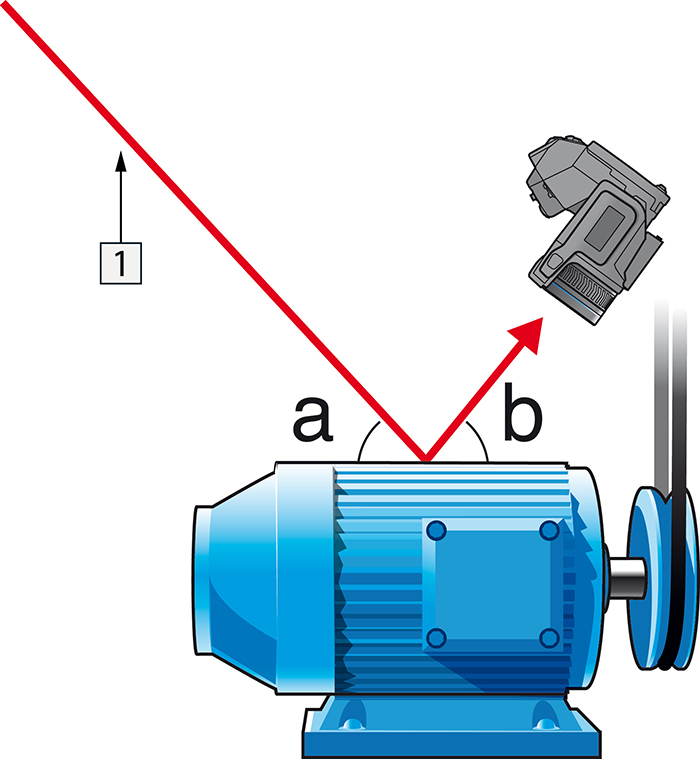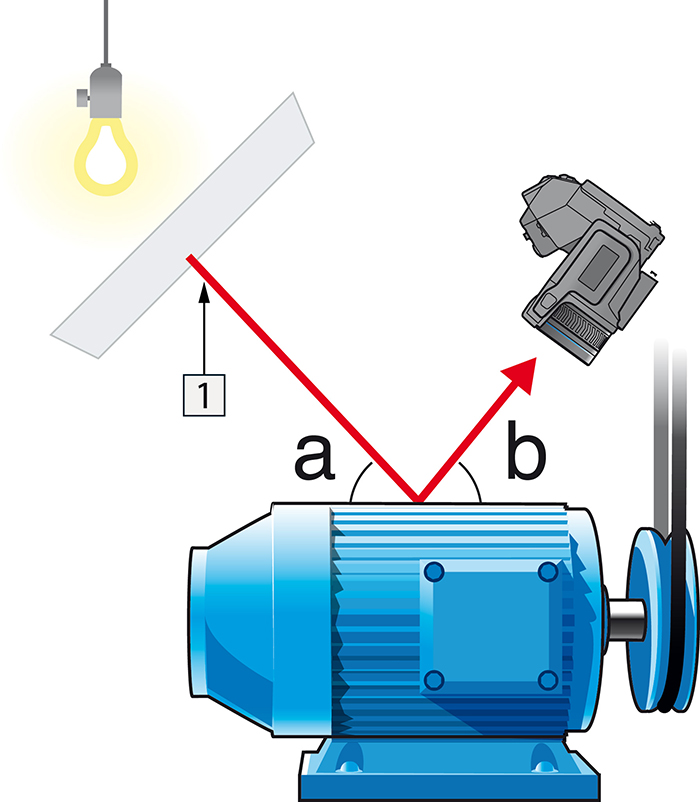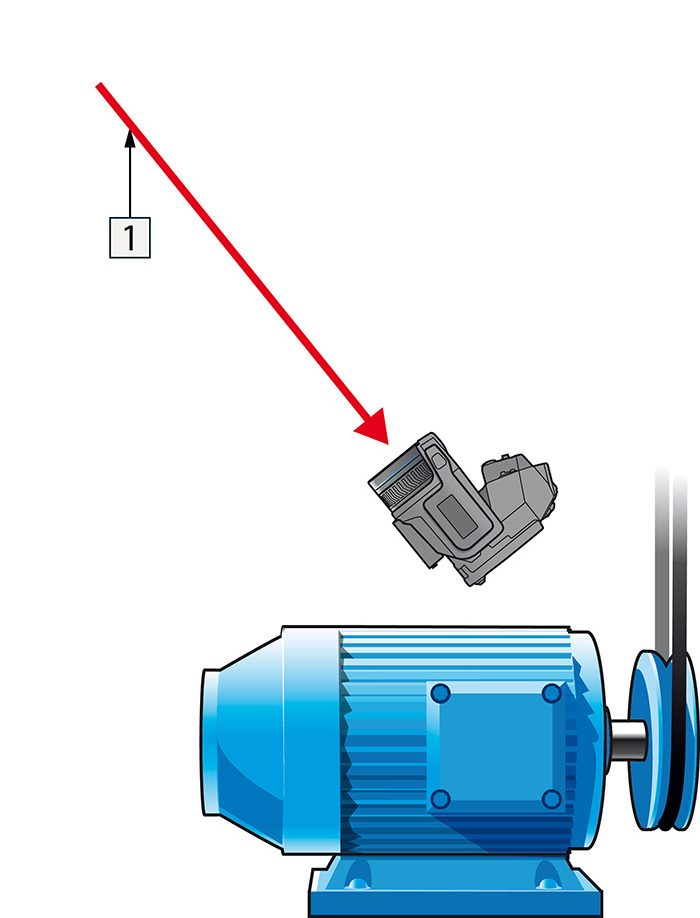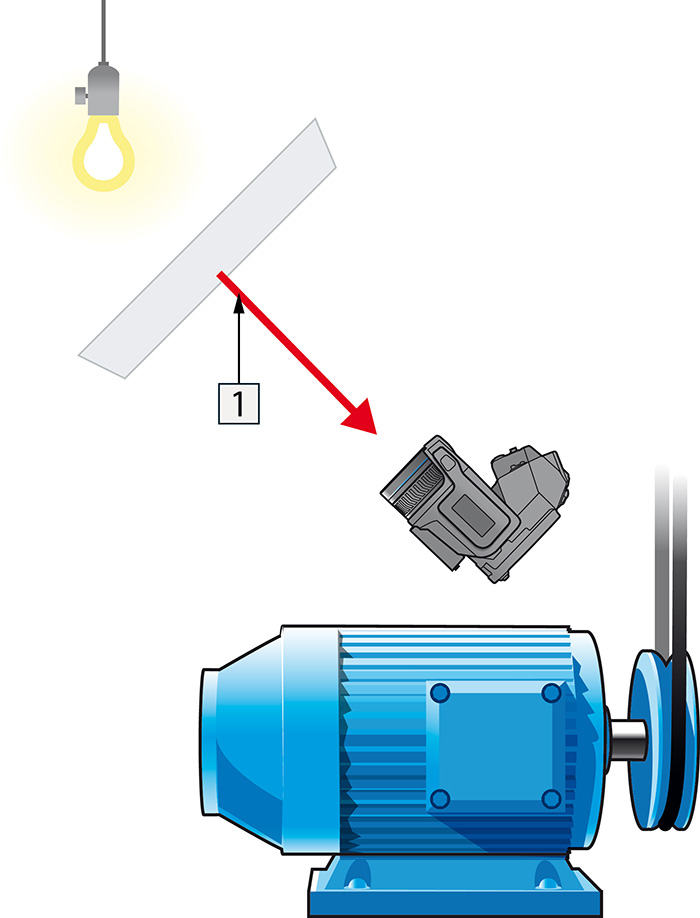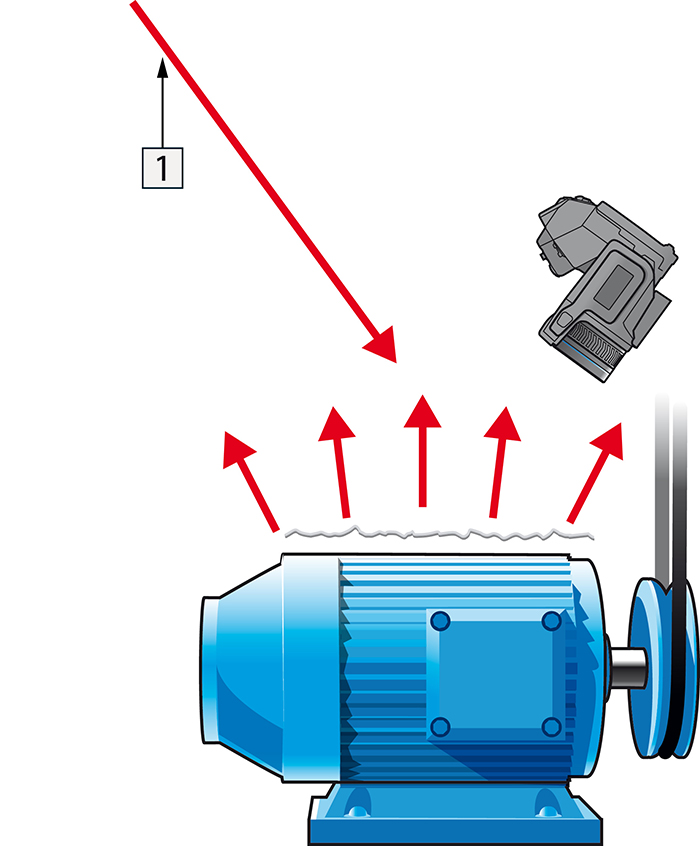18 Thermographic measurement techniques
18.1 Introduction
An infrared camera measures and images the emitted infrared radiation from an object. The fact that radiation is a function
of object surface temperature makes it possible for the camera to calculate and display this temperature.
However, the radiation measured by the camera does not only depend on the temperature of the object but is also a function
of the emissivity. Radiation also originates from the surroundings and is reflected in the object. The radiation from the
object and the reflected radiation will also be influenced by the absorption of the atmosphere.
To measure temperature accurately, it is therefore necessary to compensate for the effects of a number of different radiation
sources. This is done on-line automatically by the camera. The following object parameters must, however, be supplied for
the camera:
- The emissivity of the object
- The reflected apparent temperature
- The distance between the object and the camera
- The relative humidity
- Temperature of the atmosphere
18.2 Emissivity
The most important object parameter to set correctly is the emissivity which, in short, is a measure of how much radiation
is emitted from the object, compared to that from a perfect blackbody of the same temperature.
Normally, object materials and surface treatments exhibit emissivity ranging from approximately 0.1 to 0.95. A highly polished
(mirror) surface falls below 0.1, while an oxidized or painted surface has a higher emissivity. Oil-based paint, regardless
of color in the visible spectrum, has an emissivity over 0.9 in the infrared. Human skin exhibits an emissivity 0.97 to 0.98.
Non-oxidized metals represent an extreme case of perfect opacity and high reflexivity, which does not vary greatly with wavelength.
Consequently, the emissivity of metals is low – only increasing with temperature. For non-metals, emissivity tends to be high,
and decreases with temperature.
18.2.1 Finding the emissivity of a sample
18.2.1.1 Step 1: Determining reflected apparent temperature
Use one of the following two methods to determine reflected apparent temperature:
18.2.1.1.1 Method 1: Direct method
-
Look for possible reflection sources, considering that the incident angle = reflection angle (a = b).
Figure 18.1 1 = Reflection source
-
If the reflection source is a spot source, modify the source by obstructing it using a piece if cardboard.
Figure 18.2 1 = Reflection source
-
Measure the radiation intensity (= apparent temperature) from the reflection source using the following settings:
- Emissivity: 1.0
- Dobj : 0
You can measure the radiation intensity using one of the following two methods:
Follow this procedure:
You can not use a thermocouple to measure reflected apparent temperature, because a thermocouple measures temperature, but apparent temperatrure is radiation intensity.
18.2.1.1.2 Method 2: Reflector method
- Crumble up a large piece of aluminum foil.
- Uncrumble the aluminum foil and attach it to a piece of cardboard of the same size.
- Put the piece of cardboard in front of the object you want to measure. Make sure that the side with aluminum foil points to the camera.
- Set the emissivity to 1.0.
-
Measure the apparent temperature of the aluminum foil and write it down. The foil is considered a perfect reflector, so its
apparent temperature equals the reflected apparent temperature from the surroundings.
Figure 18.5 Measuring the apparent temperature of the aluminum foil.
Follow this procedure:
18.2.1.2 Step 2: Determining the emissivity
- Select a place to put the sample.
- Determine and set reflected apparent temperature according to the previous procedure.
- Put a piece of electrical tape with known high emissivity on the sample.
- Heat the sample at least 20 K above room temperature. Heating must be reasonably even.
- Focus and auto-adjust the camera, and freeze the image.
- Adjust Level and Span for best image brightness and contrast.
- Set emissivity to that of the tape (usually 0.97).
-
Measure the temperature of the tape using one of the following measurement functions:
- Isotherm (helps you to determine both the temperature and how evenly you have heated the sample)
- Spot (simpler)
- Box Avg (good for surfaces with varying emissivity).
- Write down the temperature.
- Move your measurement function to the sample surface.
- Change the emissivity setting until you read the same temperature as your previous measurement.
- Write down the emissivity.
Follow this procedure:
18.3 Reflected apparent temperature
This parameter is used to compensate for the radiation reflected in the object. If the emissivity is low and the object temperature
relatively far from that of the reflected it will be important to set and compensate for the reflected apparent temperature
correctly.
18.4 Distance
The distance is the distance between the object and the front lens of the camera. This parameter is used to compensate for
the following two facts:
- That radiation from the target is absorbed by the atmosphere between the object and the camera.
- That radiation from the atmosphere itself is detected by the camera.
18.5 Relative humidity
The camera can also compensate for the fact that the transmittance is also dependent on the relative humidity of the atmosphere.
To do this set the relative humidity to the correct value. For short distances and normal humidity the relative humidity can
normally be left at a default value of 50%.
18.6 Other parameters
In addition, some cameras and analysis programs from
FLIR Systems
allow you to compensate for the following parameters:
- Atmospheric temperature – i.e. the temperature of the atmosphere between the camera and the target
- External optics temperature – i.e. the temperature of any external lenses or windows used in front of the camera
- External optics transmittance – i.e. the transmission of any external lenses or windows used in front of the camera
